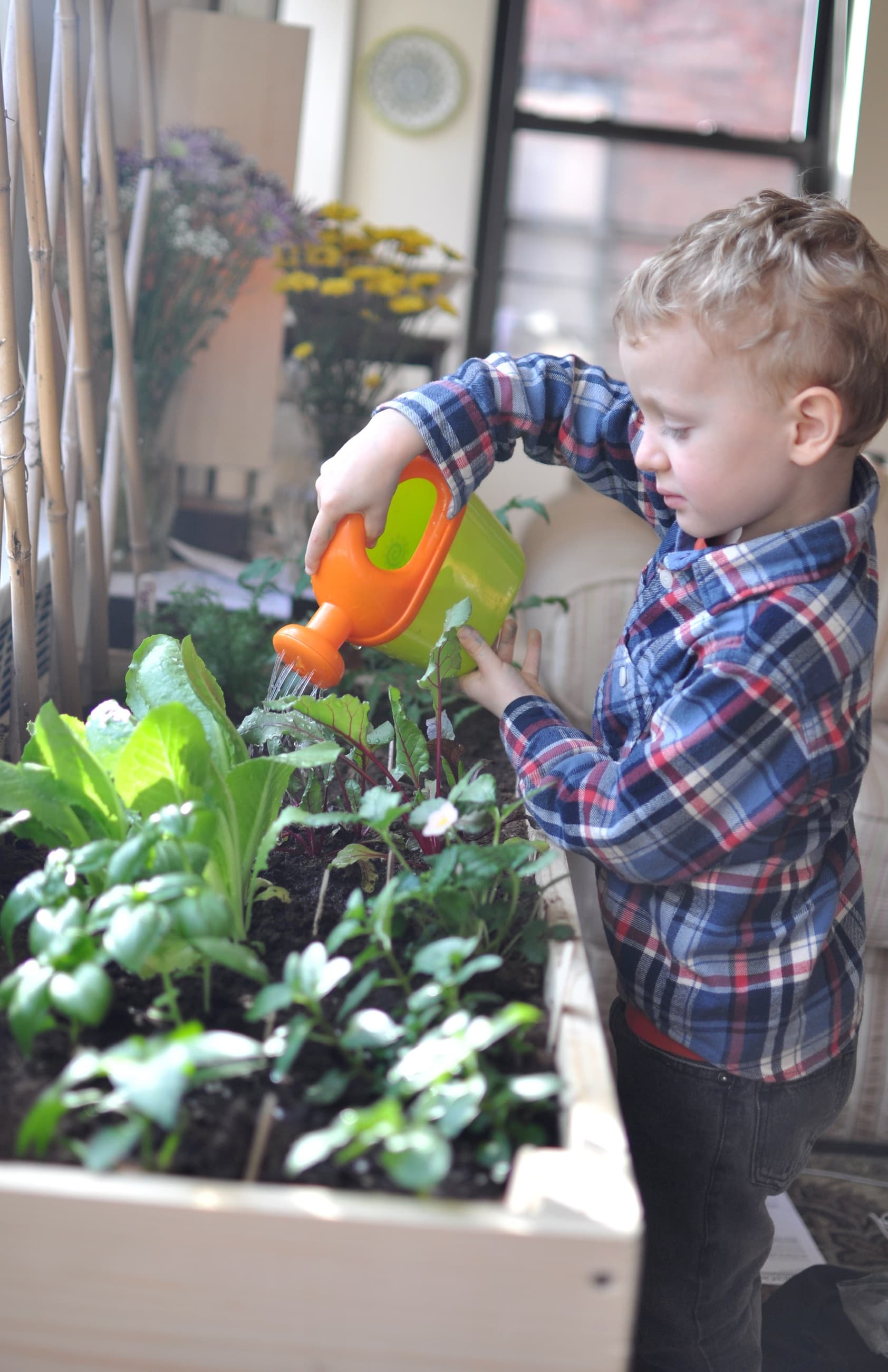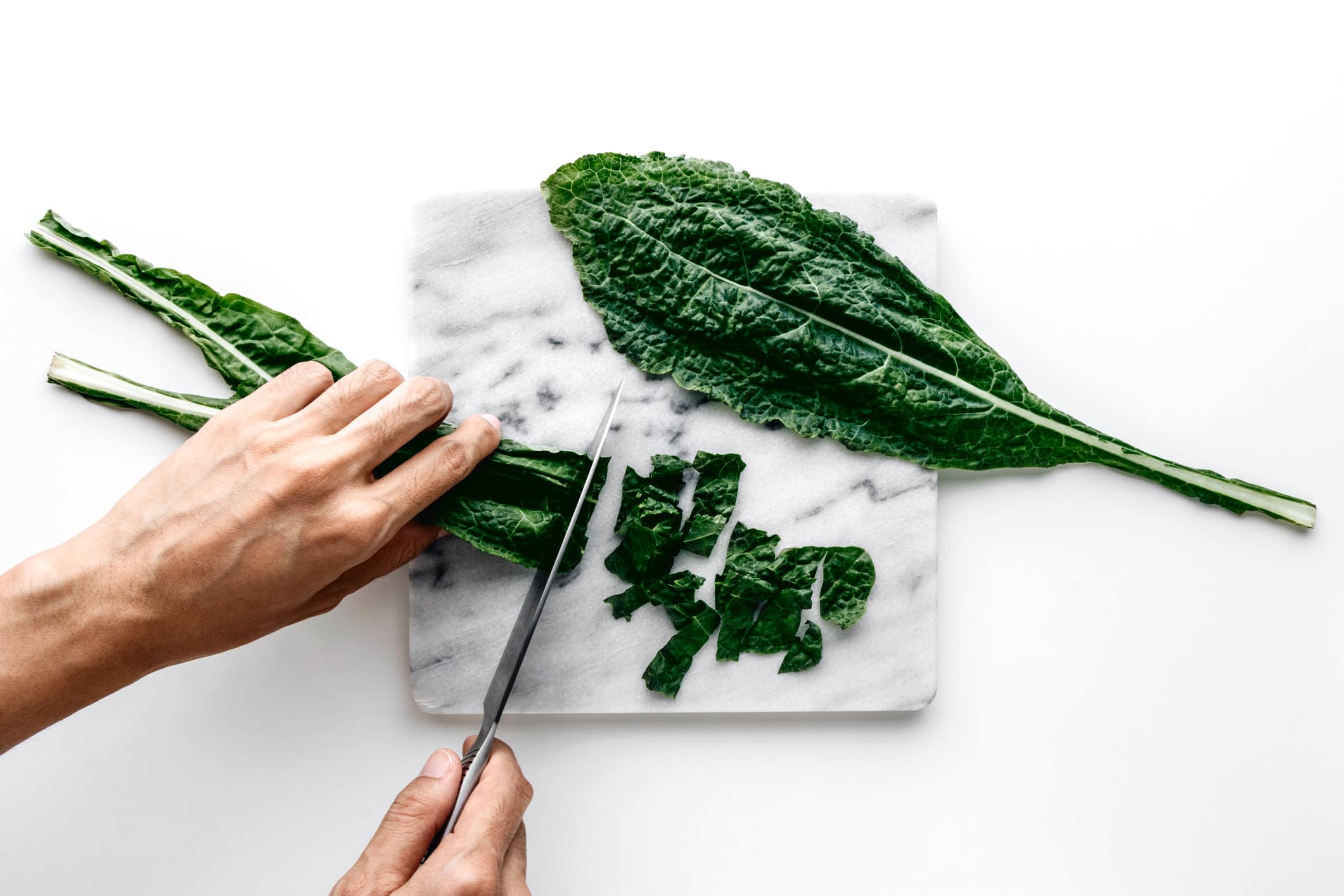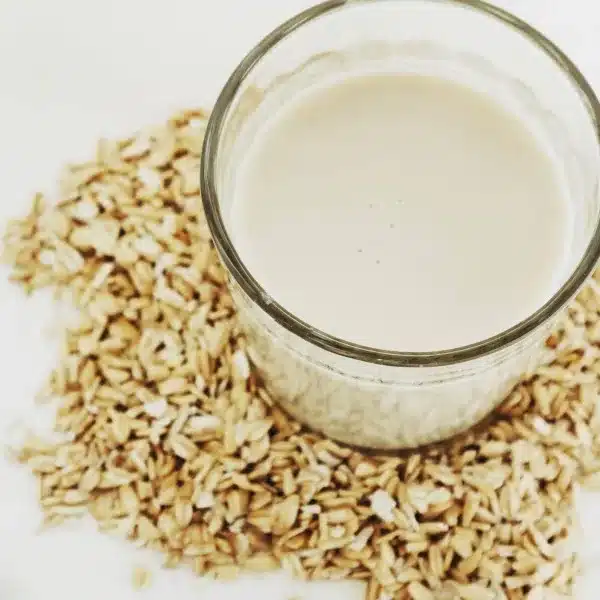6 Back-to-School Immune Boosters
Written by:
Suzanne Weaver-Goss
09/02/2020

Updated: 09/29/2023
Looking for a different guide? Browse them all HERE.
I didn’t think that by September we would still be dealing with Covid-19 and be somewhat quarantined, but here we are. Because of my age (69) and my husband’s age (66), we have been mostly only leaving home to take our daily walks.
There’s so much we can’t control right now, but I have been focusing on keeping my immune system strong. Hopefully, this will decrease my chance of becoming infected with the coronavirus, and if I do get sick, perhaps I’ll recover more quickly.
If you’d like to do the same, and especially if your kids are physically returning to school, the following strategies will help keep immune systems in top shape. (Maia shared seven more tips here for making schools safer.)
#1. Eat All the Greens

You’re probably sick of hearing me talk about green veggies, but hear me out one more time. Greens actually directly influence your immune system.
You may have heard that getting your gut bacteria healthy is one of the most important things we can do for health and immunity. Well, in addition to strengthening the blood and respiratory system, greens also promote healthy intestinal flora.
Smoothies, green juices, salads, sandwiches, and even many snacks are great ways to add greens into your family’s diet. Some of my grandchildren’s favorites include:
- Romaine lettuce spears drizzled with olive oil (we use Olea True for a double immunity boost), fresh lemon squeeze, and a little sea salt or grated parm.
- Kale chips with a variety of seasoning and spices.
- Green cabbage is great in the form of sauerkraut, which several of my grandchildren love, and which has the added benefit of probiotics.
- Yogurt or keifer fruit smoothies with mild greens (such as romaine and/or spinach).

A Word of Caution on Spinach
Spinach, swiss chard, and beet greens are best eaten in moderation because they contain oxalic acid, which depletes calcium from bones and teeth. The best way to avoid too much of these (probably not a problem for most parents!) is to simply feed your child a variety of greens. If you find your child loves spinach (as one of my grandchildren does), you can cook it with something rich like tofu, seeds, nuts, beans, butter, or oil. This will help balance the effect of the oxalic acid. If you use spinach in a smoothie, try to throw in some nuts or seeds.
One great way to get kids interested in eating greens is to allow them to grow them. If you don’t have a garden, there are many greens you can grow in small planters. Herbs are easy to grow in containers and are full of antioxidants and you can chop them finely and add to children’s food.
I find that if I buy herbs, they often rot in the fridge before I use them. Instead, I have a small kitchen herb garden with parsley, basil, thyme, cilantro, and rosemary and I just clip a few for added greens if I have nothing else in the fridge. Children don’t seem to mind parsley, thyme, or basil if I add only a small amount to their meals.

#2. Add Alkaline-Promoting Foods to Your Diet

Your body needs both acid-forming and alkaline-forming foods to function optimally. It’s overwhelming to try to figure out ratios and which foods are more acid forming and which are alkaline forming, and there are entire books written on this subject!
Unfortunately, you can’t really intuit if a food is acidic or alkaline—it has nothing to do with the actual pH of the food. (Citrus fruits, for instance, are acidic in nature, but citric acid actually has an alkalizing effect to the body.)
Here are a few simple tipes to make your family’s diet more alkaline:
- Fruits and vegetables are the most alkaline-forming foods. So, if your child is eating acid-forming foods like protein (especially animal protein), starch (especially wheat and other refined grains), or sweets, be sure to include some alkaline foods for balance.
- Nuts tend to be acidic. Almonds are the one exception, which is why many people consider them to be the healthiest nut.
- Grains are mostly acidic, with a few exceptions. Buckwheat, quinoa, and millet are alkaline, so you can rotate these into your child’s diet. Need recipe inspiration? My grandkids love these buckwheat pancakes, and my friend Marybeth kindly shared an amazing millet burger recipe here.
- Sugar of almost all kinds is acidic. Some experts say that raw honey is alkaline forming, so you might explore using this instead of maple syrup.
The real trick here isn’t to worry about serving acidic foods, but rather to balance them with alkaline foods. For example, if you’re serving crackers and cheese for a snack, you might include include sliced cucumber. If breakfast is cereal with milk (note: plant milk is less acidic than animal milk, and raw is less acidic than pasteurized), you can slice a banana or strawberry on top or toss in a handful of raisins. Pasta can we topped with finely chopped fresh basil or parsley. A grilled cheese with tomatoes is a great combo.
If your kid refuses anything green, just give them some sliced fruit to go with their chicken nuggets! Or, you could try the weird but delicious snack my grandma used to serve: sliced green pepper with peanut butter, chilled in the fridge. You get the idea!
#3. Eat With the Seasons

When I was trained in Macrobiotic nutrition, I learned the importance of eating seasonal foods. Doing so supports a healthy immune system in several ways, including the fact that in-season produce packs more nutrition than produce that is left to ripen on a truck.
Perhaps most importantly, the freshest fruits and vegetables taste better, so kids are more likely to eat them. A visit to your local farmer’s market will reveal what’s currently in season in your area, but here are a few quick examples from the Northeast, where I live:
- Asparagus taste the best here in the spring, when it’s in season.
- I only eat fresh strawberries at the end of May when they are growing here in PA. (Note: Frozen berries are a great because they are frozen at the height of ripeness–we eat these all winter!)
- Kale is the best in the fall and winter when it gets cooler.
- Zuchini and summer squash in the summer is a great way to try an alkaline pasta dish. (Of course some kids will protest but there’s also zucchini pancakes and zucchini “crab” cakes.)
#4. Sleep More

We all know how important a good night’s sleep is for our immune system. You also probably know that screens can disrupt sleep. Even watching TV can suppress the release of the sleep-inducing hormone melatonin. It is best to avoid screens of all kinds at least 30 minutes before bedtime, but this can be hard for kids who like to read before bed on tablets. The Kindle Oasis is the (expensive!) model with blue-light blocking capabilities.
Another tip for better sleep: Kids should avoid caffeine (even chocolate!) in the afternoon or evening. Maia’s son Wolfie loves kombucha, which is made with black tea, so she avoids letting him drink this before bed.
Finally, even older children benefit from a mellow bedtime routine to help them wind down. And you can still read to your older kids before bed, a habit that I like to think is responsible for both of my grown children loving to read so much.
#5. Peaceful Meals

I think how you eat can be just as important as what you eat. Positive states of mind are alkaline forming, and feeling angry or stressed creates acidity in the body.
Having peaceful family meals right now is certainly a daunting task, but simply avoiding stressful topics during dinner can help.
When I was a child, we started every meal with a prayer. I didn’t keep that practice in my own family, but I now realize that it was a great habit for health!
If you don’t want to lead your family in a formal “grace,” perhaps just create a ritual before family meals that promotes peacefully. How about simply holding hands and expressing gratitude for the food and those who prepared it?
#6. Movement & Sunshine

Children’s bedtimes are so much easier when they get fresh air and exercise during the day. If you don’t believe me, try it. They will fall asleep easier and sleep more soundly, I promise. (Lots of daytime movement will also make kinds hungrier, and a good appetite is crucial for getting children to eat more veggies.)
My years as a Waldorf teacher taught me that kids should get outside every day regardless of the weather. All you need is sunscreen, sun hats, and rain gear, winter hats, a warm coat, and mittens to enjoy whatever the day brings.
I admit that it’s so hot here in Pennsylvania in the summer that it’s hard to get outside daily. My solution is a long walk in the very early morning, or later in the evening.
Another benefit of being outside: vitamin D. Many of us our deficient, and the best way to increase your levels of vitamin D is a few minutes of direct sunlight (when you’re not wearing sunblock!).
Kids really thrive in nature, and sometimes we just need to help them notice it. I love to talk about the seasonal changes of plants with my grandkids, and to observe the weather, look for interesting insects, gather objects from nature and make an indoor nature or seasonal table! My grandkids love this book to get excited about nature.
Please share your own ideas for keeping immunity strong as we head into this challenging fall.
To your health,


Suzanne, Certified Holistic Health Coach
Note: This article contains affiliate links or sponsored content, which means that if you make a purchase, we may earn a commission. We only recommend products that meet our strict standards for non-toxicity and that we use (or want to use!) ourselves. Thank you so much for supporting the brands that make Good Stuff!
Enjoying this guide?
Join 60K families who rely on our free guides on everything from milk to mattresses! Sign up to get $5 off your first order, access to our ultimate Clean Products Cheat Sheet, and ongoing exclusive access to coupon codes and promotions. Our weekly newsletter is filled with well researched tips and tricks to live a toxin-free lifestyle.
Related Posts
Healthy Store Bought Oat Milk Guide 2024
Safe, Non-Toxic Toys Guide
Healthy Thanksgiving Recipes
Daylon’s Healthier Fried Chicken Sandwich
-
Hi Maia and Suzanne,
Any guidance around elderberry syrup while pregnant? I have the brand you sell on your site, and just realized I’m not sure if it’s contraindicated. Most of the quick research I did just says that it hasn’t been studied in pregnant women (like so many things…)
Thanks so much!
-
Hi Jenny, The company that makes or Elderberry syrup says this:”All the ingredients we use in our Elderberry Syrups are perfectly safe for pregnancy, nursing, and children. There are local nurse midwives and physicians who recommend my products for their patients. We always recommend you check with your health care provider before starting a new routine.” Hope this helps!
-
-
Hello Suzanne, Thanks for the tip about Spinach and the hazard of too much oxalic acid. Need to cut down. The pepper is nightshade as is tomato and eggplant. Quitting nightshade and all coffee and caffeine has put my arthritis pain in total remission. Part of my Covid 19 antidote research has turned up Vitamin D3 and I’ve been taking pharma grade 25 mcg daily which seems a fair amount since I am 73 yrs old. Thoughts?
-
Hi Eric,
There are so many delicious greens to eat. And yes nightshades can be a problem so good for you that you figured that out. Also, many people love coffee but I have always found it to be a problem for me. I take Carlson Vitamin D liquid drops that my 92 year old friend recommended to me. It is 150mcg. I am more of a food writer and researcher than a vitamin proponent.
-





Leave a Reply
You must be logged in to post a comment.